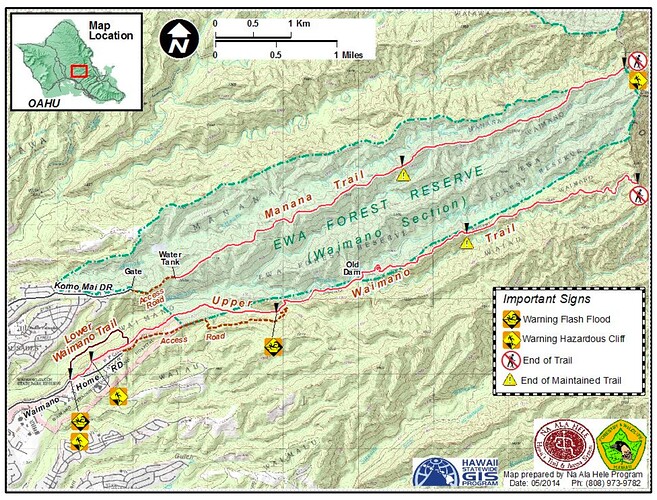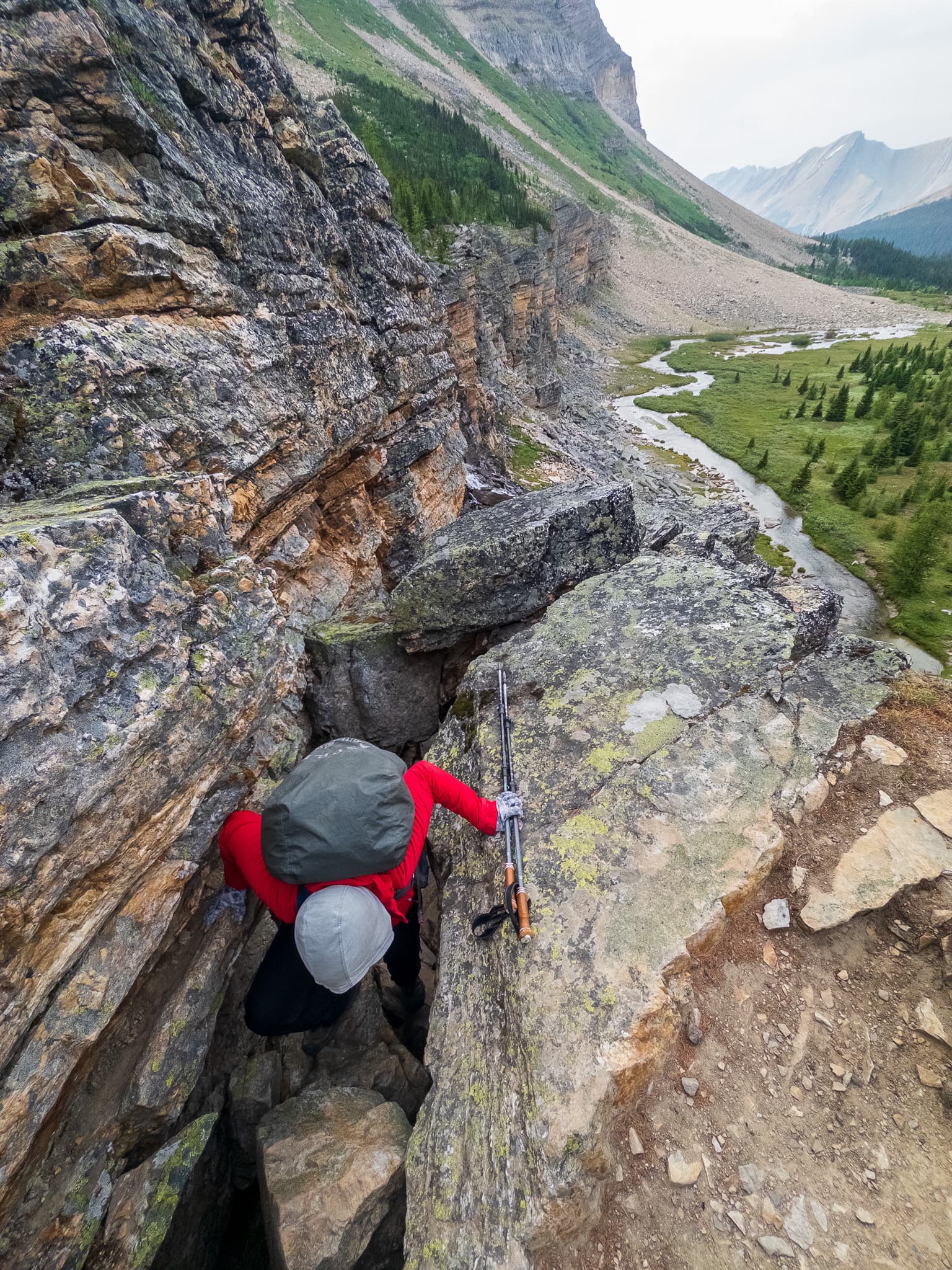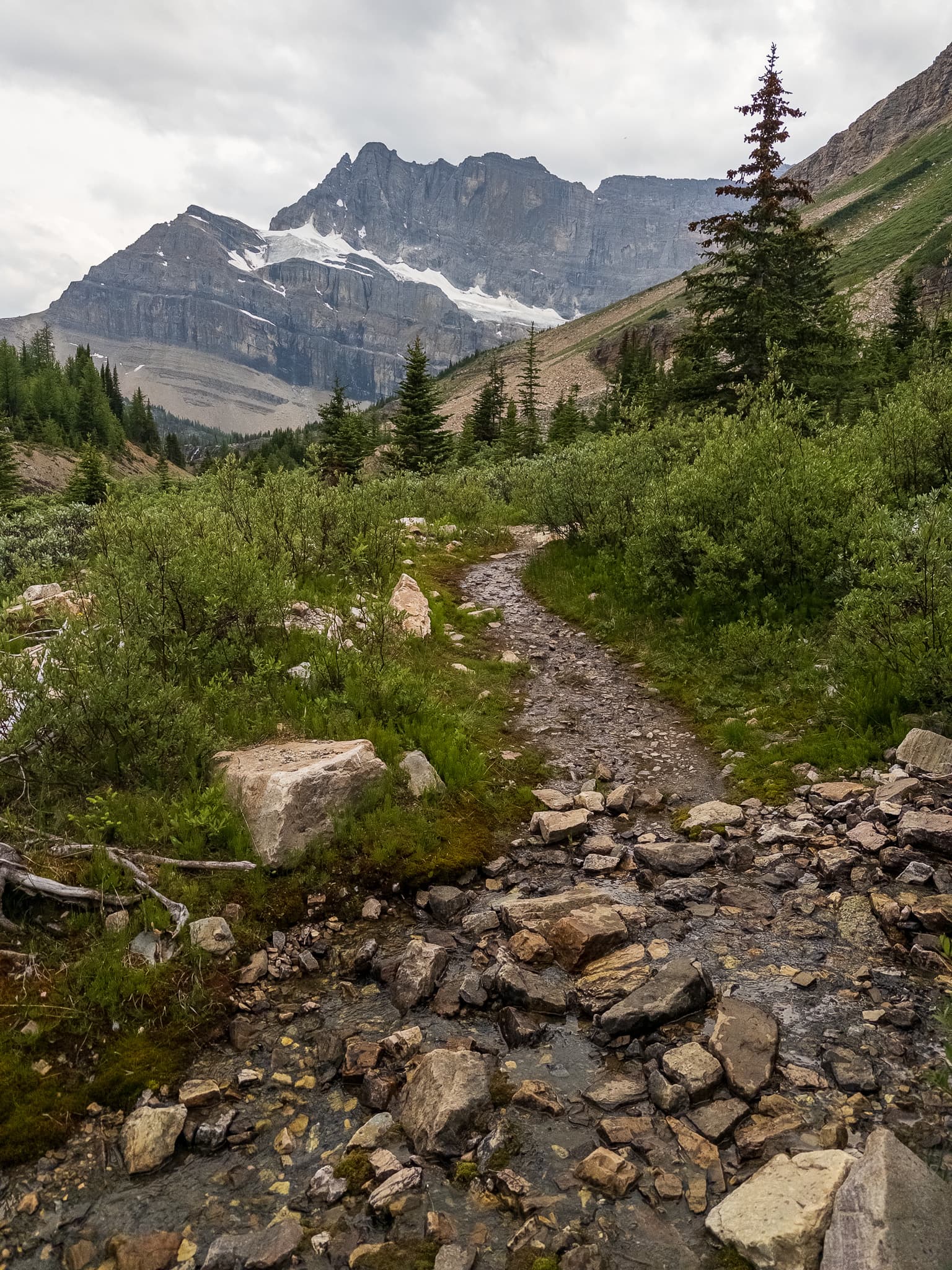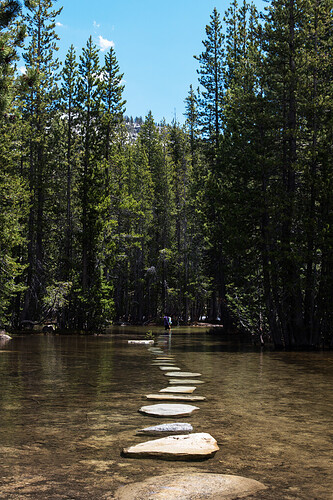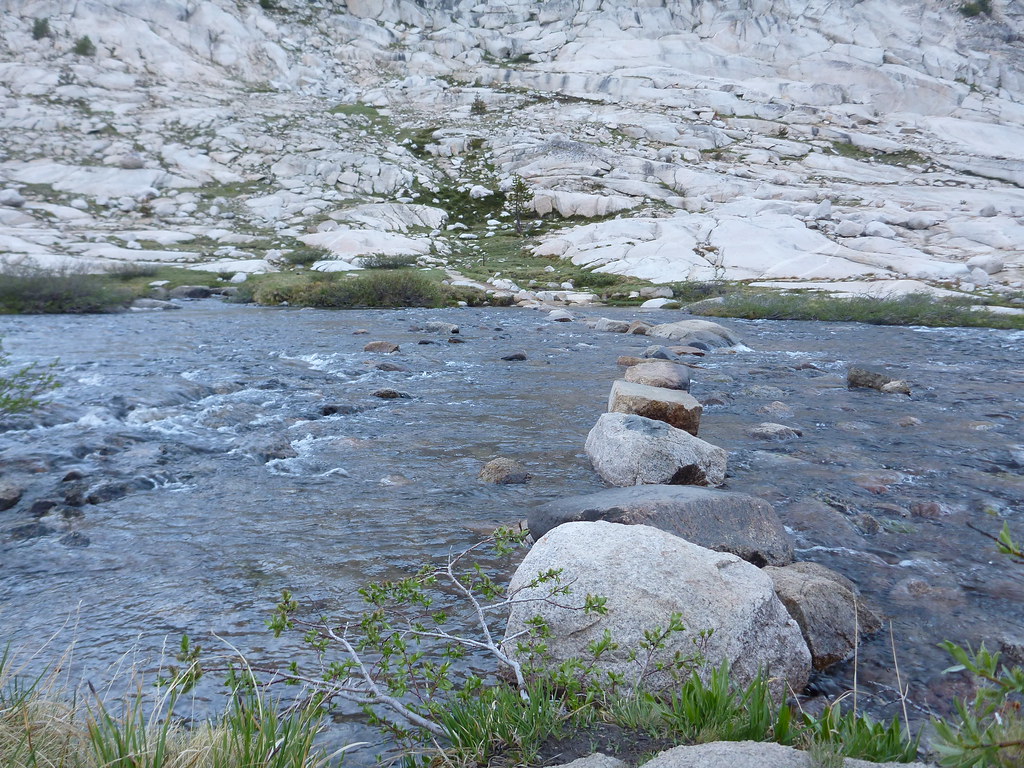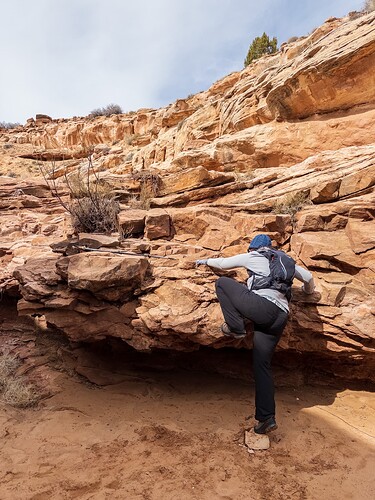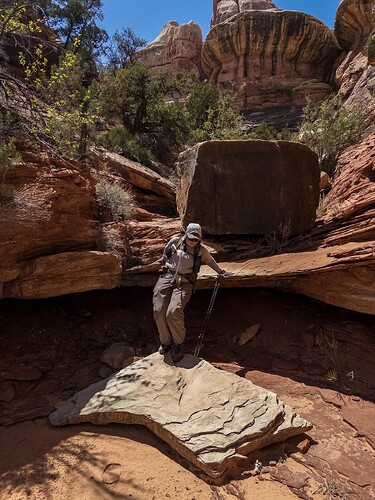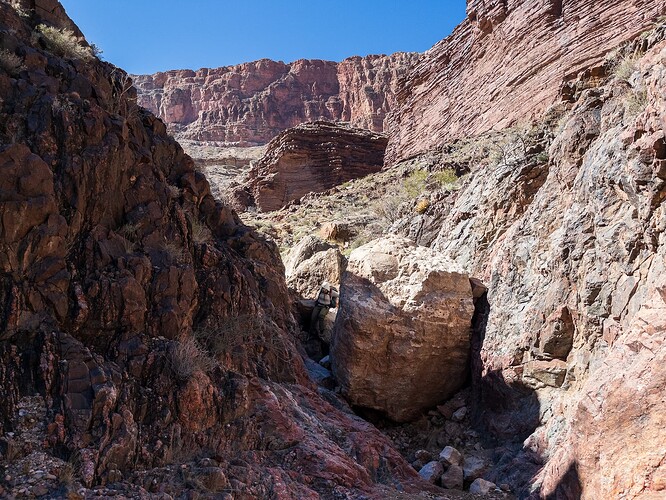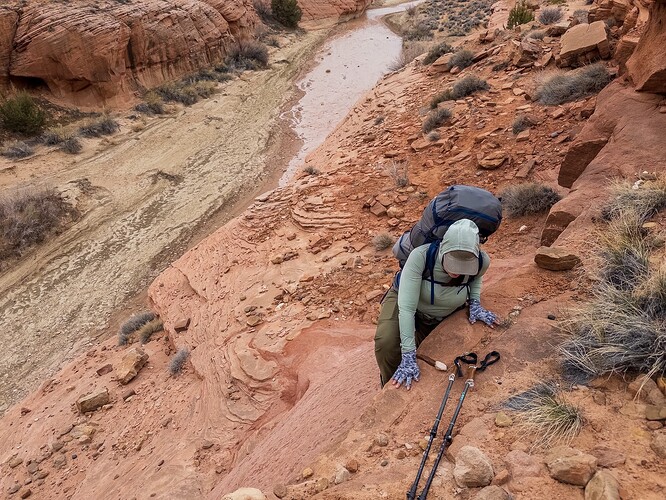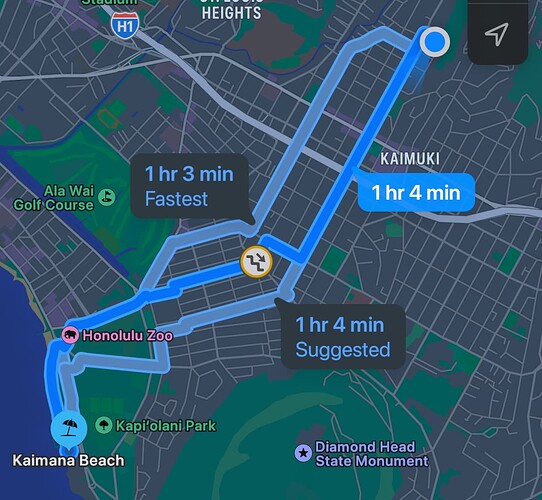This is something that has come up obliquely in conversation a few times.
Up in the mountains, or in the sandstone canyons of the Southwestern US it’s fairly common for an obstacle that could be T3 or even T4 (a simple mantle requires use of hands to pull yourself up) along an otherwise T1 or T2 path.
In this thread someone mentioned making a 1m section of a path a scramble. It techniquely works, but feels awkward.
I put up some related examples of brief obstacles/hazards in a previous comment.
This also comes up when discussing grading certain paths.
There’s some momentum into having exposure / risk of falling be a hazard node vs a tag on a way. I’m fine with that but if we’re going down that road it’d be helpful to have other ones as well.
This is the approach Hawaiian state agencies use to describe trail hazards:
This is technically a T4 / scrambling level move but would work better as obstacle=mantle:
Likewise instead of marking an entire trail T2 or surefooted_hiking due to areas like this (or making micro-segments) being able to put in a obstacle=stream_rock_hopping or something here:
